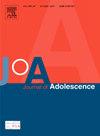Contact Experiences of Adolescents and Family Members Are Associated With Decrease of Personal Stigma But Increase of Perceived Stigma
Abstract
Background
Adolescents’ mental health-related public stigma, encompassing personal and perceived stigma, may vary according to family dynamics and personal or familial experiences. This study aimed to investigate the association between adolescents’ and their family members’ stigma, specifically whether adolescents’ personal and perceived stigma are associated with other members’ experiences, particularly contact experiences.
Methods
From a population-based cohort of adolescents aged 17 years in Tokyo, 1,198 responses from 378 families (349 target adolescents, 364 mothers, 291 fathers, 194 siblings) were used in this study. Adolescents, their parents, and elder siblings responded to the self-report questionnaires. Personal and perceived stigma were assessed using the behavioral intention subscale of the Reported and Intended Behavior Scale and Perceived Stigmatizing Attitude Scale, respectively. The relationship between stigma and contact experiences with people with mental health problems was examined simultaneously among adolescents and their family members.
Results
The stigma of adolescents and their siblings was lower than that of their parents. Personal stigma of adolescents is associated with that of their siblings. Overall, contact experiences with people with mental health problems were associated with reduced personal and increased perceived stigma. Mothers’ contact experiences were associated with adolescents’ personal stigma.
Conclusion
The stigma toward people with mental health problems may be shared between adolescents and siblings. Mothers’ contact experiences with people with mental health problems may be related to adolescents’ stigma. Family members’ stigma toward people with mental health problems and their contact experiences may play an important role in stigma formation among adolescents.


 求助内容:
求助内容: 应助结果提醒方式:
应助结果提醒方式:


